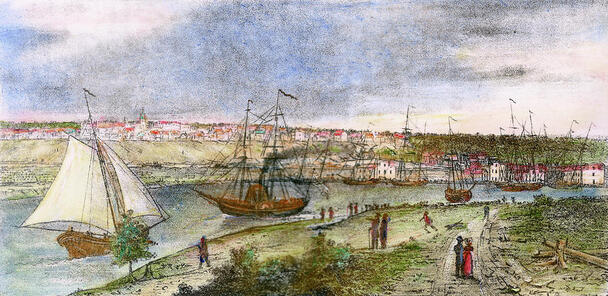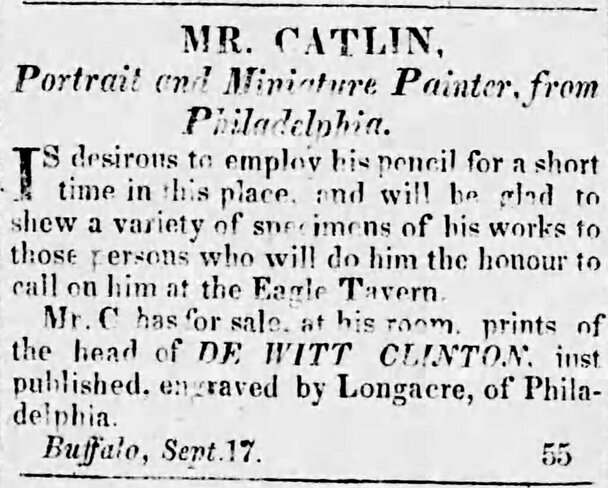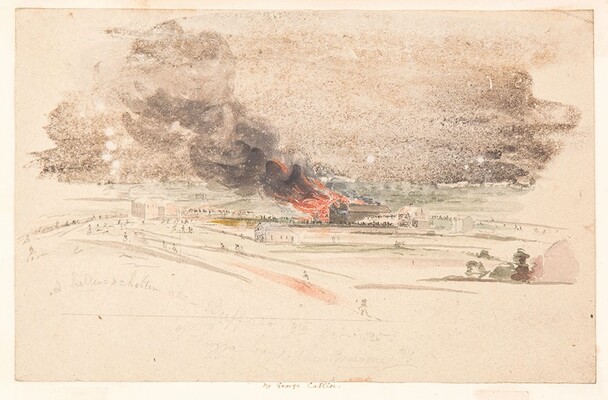An article I wrote titled, “Captain Myndert Marcelis Dox & the Buffalo Brewery,” appeared in the Winter 2016 issue of Western New York Heritage. The Buffalo brewery was built on the northeast corner of what is now Elmwood and Mohawk streets in Buffalo. We never knew much about the actual construction of the brewery Dox built or how it operated.
On October 9, 1825, the brewery caught fire and was reported to have burned to the ground just a few days before the opening of the Erie Canal on October 26. The brewery was quickly rebuilt at the same location and then started operating again. Captain Dox’s Buffalo Brewery stayed in business under different owners until it finally closed with the advent of Prohibition in 1920.
George Catlin, an artist active in the 19th century, was famous for his many paintings and sketches of Native Americans and the American West. Catlin spent 1825 in Buffalo and Niagara Falls. During that time, he painted his first Native American portrait, the famous Seneca Nation chief, Red Jacket. He also painted several landscapes of Buffalo and Niagara Falls. A Buffalo newspaper advertisement from September 7, 1825, states George Catlin has examples of his paintings available for sale at his room in the Eagle Tavern.

Ca. 1825 lithograph, showing Buffalo from the light house, based on a sketch by George Catlin.
Private collection
While researching Buffalo history recently, David Mik found a painting, attributed to George Catlin, of the Buffalo brewery fire which was painted during his time in Buffalo. The painting was in the possession of the Captain William Henry Shippard estate until it was sold by a London auction house in 2019. Captain Shippard was a close friend of George Catlin and possessed several of Catlin’s paintings.
The sketch is a 5 3/8-inch by 8 3/8-inch watercolor, with an inscription in pencil, “A helter-schelter at Buffalo 9th Oct. 1825 / Huzza boys, the Brewery ….”. The inscription roughly translated in today’s verbiage is as follows: “pandemonium at Buffalo 9th Oct. 1825 / Hurray boys the brewery fire.”

Advertisement, promoting George Catlin’s art and services while in Buffalo, from a Buffalo newspaper.
Author’s collection
Using this painting, along with newspaper articles from the time, we can now make an educated guess as to the construction, size and method of operation of the brewery. The building was a large wooden structure, two or two-and-a-half stories high, which is quite substantial for that time and location. Based on the size and height of the building, a gravity system of brewing, popular at the time, was most probably used due to the lack of machine power. Raw ingredients were raised by pulley and water was pumped to the top of the building where the brew kettle was located. As each step of the brewing process was performed, the product would descend from floor to floor, ending up in the cellar for storage. Also, the loss in the fire was estimated at $5000, a very large sum for the time.
The discovery of the George Catlin watercolor has added another small piece to the fascinating story of Buffalo’s early brewing history.










